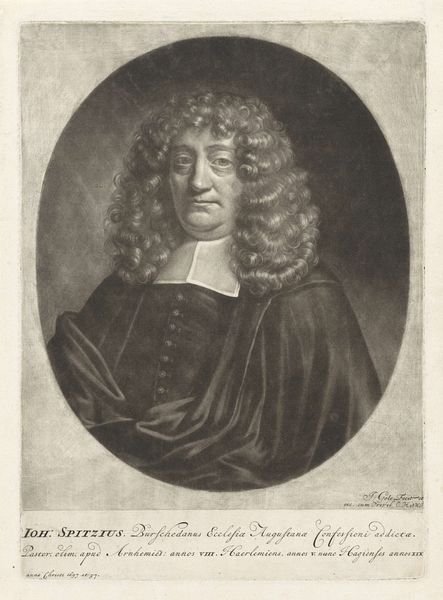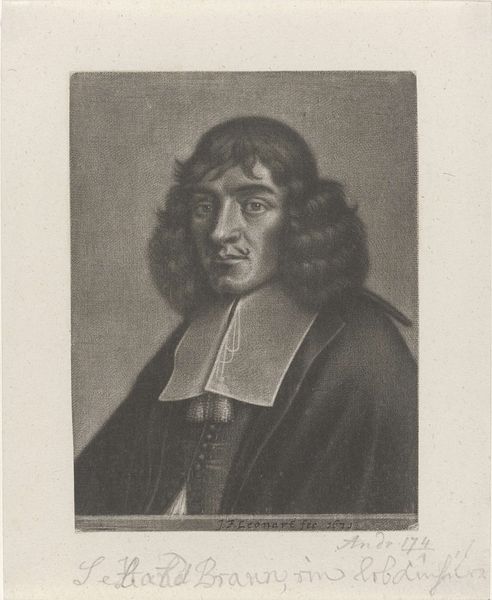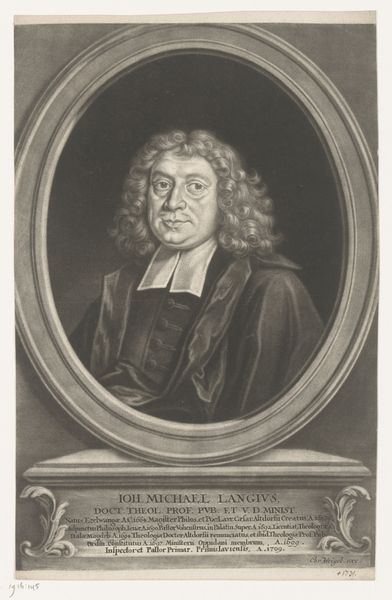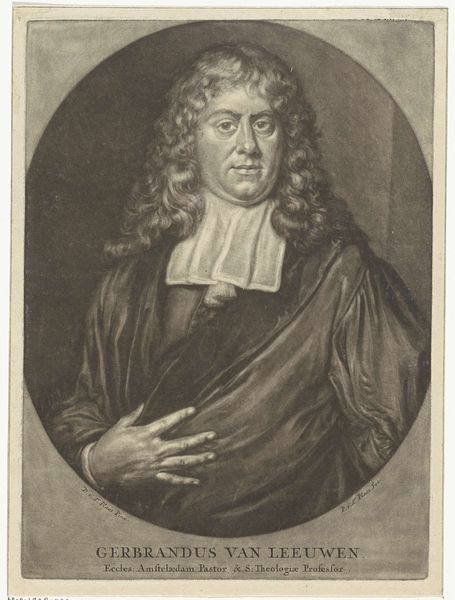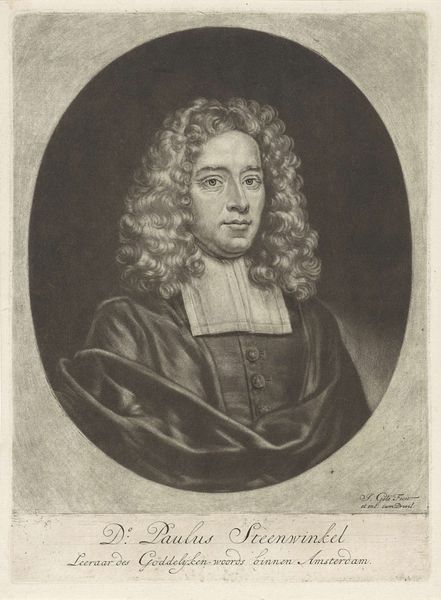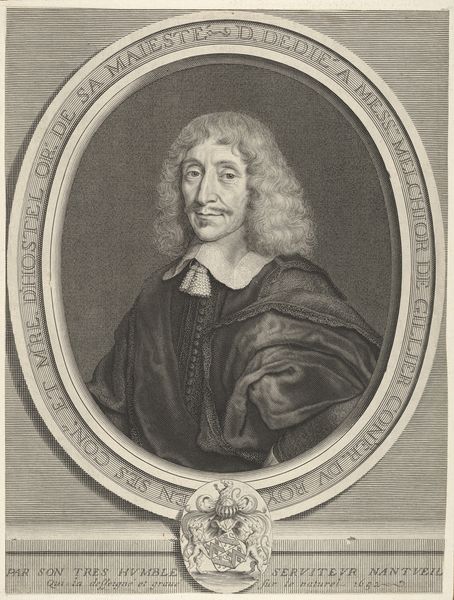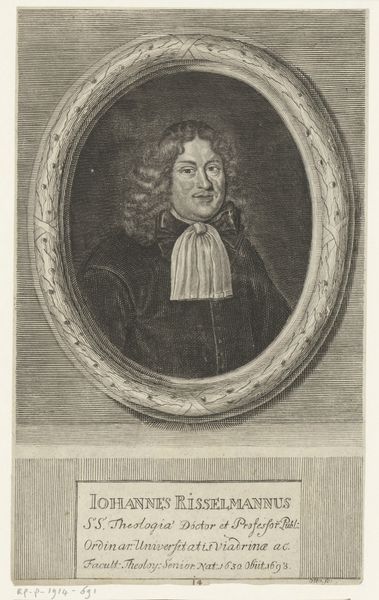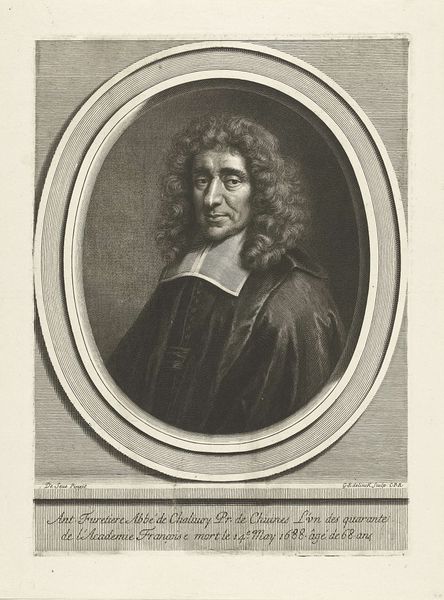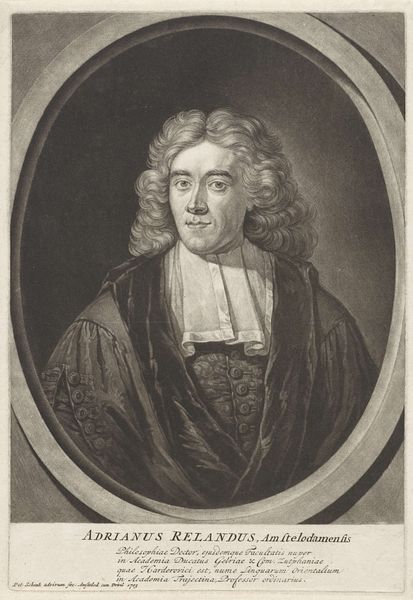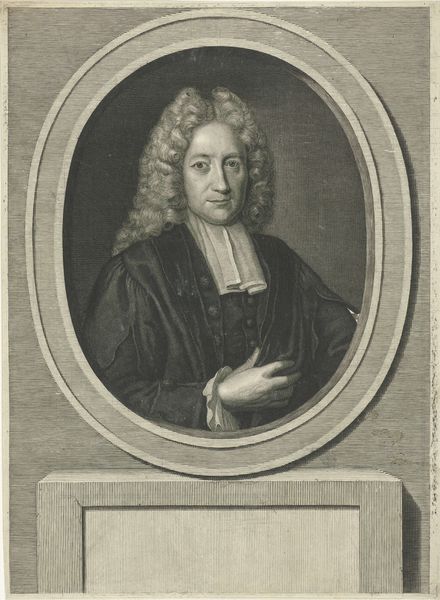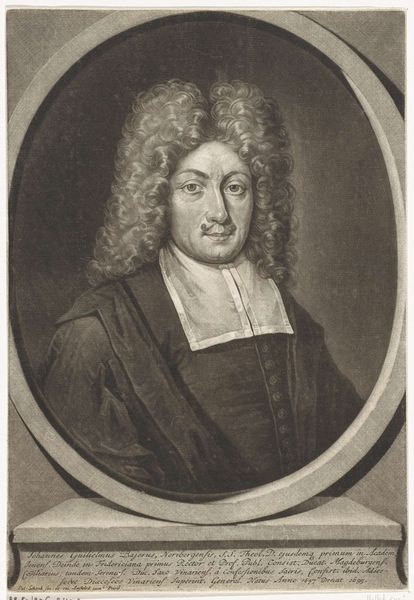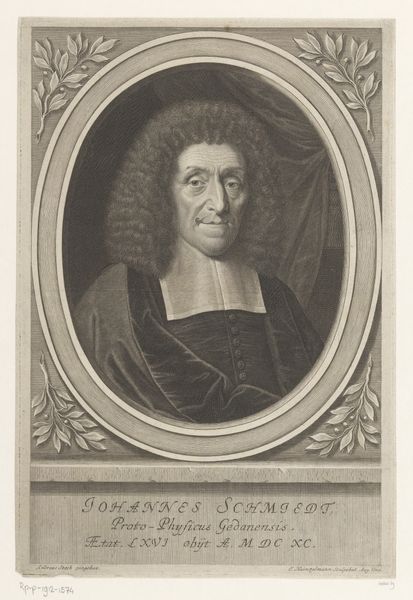
print, engraving
#
portrait
#
baroque
# print
#
charcoal drawing
#
engraving
Dimensions: height 202 mm, width 162 mm
Copyright: Rijks Museum: Open Domain
Editor: This is "Portrait of Johan Spitzius," an engraving from 1685 by Johann Friedrich Bodecker. It has a very formal and almost austere feel to it. What's your take? Curator: It's compelling how Bodecker uses the conventions of Baroque portraiture—the oval frame, the inscription, the sitter's controlled gaze—to position Spitzius within a very specific social and theological context. Who was Spitzius and why might Bodecker choose to depict him this way? Editor: Well, according to the inscription at the bottom, he was a pastor in Arnhem. Does the Baroque style itself contribute to understanding his position or identity? Curator: Absolutely. Think about the Baroque emphasis on grandeur and order. Bodecker uses the conventions to reflect and solidify Spitzius’s authority as a religious figure. However, engraving as a medium allowed for wider distribution of images, reaching a broader public than a painted portrait could. Who was the audience? What might they expect or want from such a portrait? Editor: So it’s not just about showing *who* he is, but about controlling how he is seen and remembered by different groups of people, both elites and ordinary folks? Curator: Precisely. And beyond the man himself, consider how the visual language serves the larger power structures. How does art like this function in the religious and political landscape of the time? Who benefits from these representations, and whose stories are left out? Editor: That’s fascinating. I never really considered how portraits could be so deeply embedded in social dynamics. I was mainly looking at it aesthetically before. Curator: Seeing it in the context of social history helps us unravel the complex dialogues that shape our understanding of art. It adds so many different layers to that first impression.
Comments
No comments
Be the first to comment and join the conversation on the ultimate creative platform.
